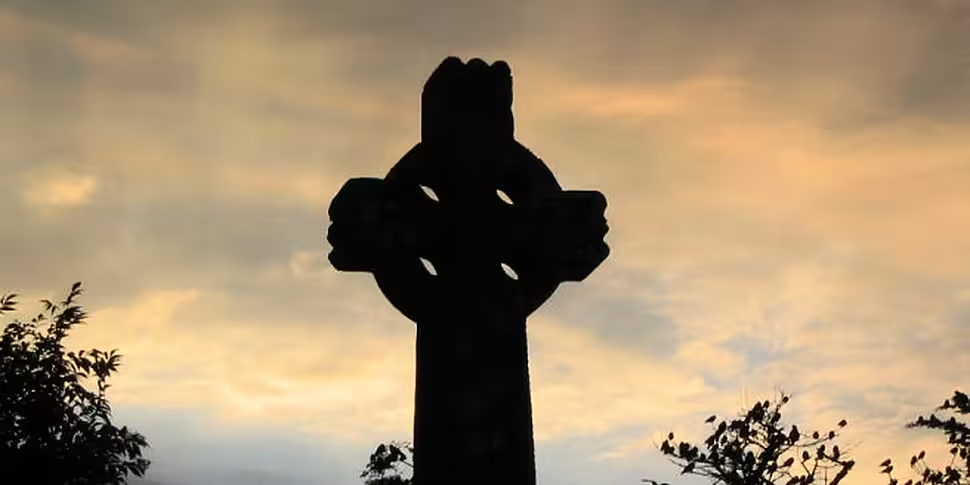This week on Newstalk Breakfast Donal Fallon, historian and author of the blog Come Here to Me, told Chris and Ivan about a short-lived group known as the Irish Christian Front, who led a crusade against Communism in the 1930s.
The full interview can be listened to below Donal's account of the group.
1: Firstly, what was the Irish Christian Front?
The Irish Christian Front was one of several Catholic, or perhaps you could more accurately say Anti-Communist groups, that emerged in 1930s Irish society. It was established by Patrick Belton, a charismatic veteran of the 1916 Rising and a totally rabid anti-communist voice in 1930s Ireland, but what makes it so interesting is the fact it could mobilize massive numbers, tens of thousands in fact, at demonstrations in Dublin, Cork and elsewhere.
2: Where did this militant anti-communism come from?
There were very significant International events, more than anything though the Spanish Civil War, when General Franco leads a coup against the left-wing Spanish Republic. In Ireland, Franco is hugely popular, and some of the largest collections inside and outside of Catholic mass in history happen at this time. There’s also the belief that Moscow is gaining more and more influence in world affairs, but there’s a home grown red scare too. In the 1932 General Election Cumann na nGeadheal had taken out an amazing front page advertisement in The Irish Times that said ‘The gunmen are voting for Fianna Fáil. The Communists are voting for Fianna Fáil.’ Sections of the public were genuine in their belief that Fianna Fáil were communist. A Cumann na nGeadheal leaflet in 1932 warned ‘It is your duty to help the Government Party to eliminate once and for all the danger of a Spanish Republic in Ireland...A careless electorate gave Spain a weak Government. Then the rest came’.
3: Did this anti-communism ever turn violent?
There was a forerunner to The Irish Christian Front, called the Saint Patrick’s Anti-Communist League, in March 1933. Over three nights in late March 1933 huge crowds laid siege to buildings in Dublin they believed were the Headquarters of Communism. On Great Strand Street Connolly House was totally ransacked and destroyed, and Gardaí noted at the time that among the mob was a “sizeable percentage of well dressed young women”, so not your typical hooligans!
4: What was the message of the Irish Christian Front in 1936?
The messages were often incoherent. At a meeting in Cork in September 1936, reports on which were collected by Gardaí for security purposes, the Right Rev. Dean Sexton told a crowd of many thousand that a ‘renegade Jewish gang in Russia’ were seizing power in Spain and could do likewise in Ireland. In Dublin, the Christian Front organised branches right across the city. At the launching of its Phibsboro Branch, a largely-attended meeting was told by a Father O'Herlihy that "Communism is the plague of modern times and we have an example of it in Russia today where all liberty has been lost for the individual, the family and society." So there was always a unity of ideas around the threat of Russia, but anti-Semitism was a factor with some leading figures.
5: Were they right to be afraid of communism in Irish Society?
Ironically, the Communist movement was incredibly weak, so weak it was barely able to keep itself together, never mind seize power. The Communist Party of Ireland had revised itself in 1933. In the municipal elections of that same year, the Party General Secretary polled only 75 votes, while young Jim Larkin, who had been an elected councillor, mustered only 338 votes, losing his seat. It was an abysmal showing, but said much about the feeling of the Dublin public.
They also faced a very real problem, in that they couldn't organise frequently in public without being attacked. At Easter 1936 for example, several hundred people attacked 60 members of the Communist Party on O’Connell Street and in Glasnevin Cemetery as they were trying to commemorate the 1916 Rising.
6: What about Paddy Belton, the leading light of all this, how much of a respected voice was he?
Even by the standards of the day, the Christian Front seems to have drifted towards more and more bizarre politics. Campaigns against things like Jewish immigration to Ireland were waged alongside campaigns to close down Dublin’s ‘thriving nudist clubs’ (God only knows). Increasingly seen as a crank, and becoming more and more anti-Semitic ,Belton would lose his seat in the 1937 General Election, by which point the movement was in decline.
7: Did many members of the Irish Christian Front actually go to Spain to fight for Franco against Communism?
Irishmen fought in the Spanish Civil War on both sides. Of the approximately 900 Irishmen who fought in Spain, three quarters fought on the nationalist side in support of Franco. The Irish Christian Front raised money in support of Franco, and many members did go to Spain, with the Irish Brigade of Eoin O’Duffy. Brendan Behan joked that O’Duffy’s men may be the only army in history to “come back with more men than they left with”, and their time in Spain was brief. Amazingly, the Pro Cathedral sent their pipe band over to Spain to support O’Duffy. The St.Mary’s Pipe Band was rechristened the St.Mary’s Anti-Communist Pipe Band! They marched from Alexandra Basin into the centre of the city, where they were welcomed at the Mansion House by Dublin’s Lord Mayor, Alfie Byrne. Byrne went as far as to state he felt that he was voicing the opinions of all Irish liberty loving people when he said “welcome home” to O’Duffy and his men.









